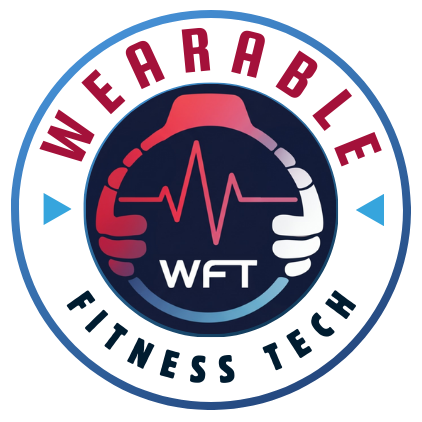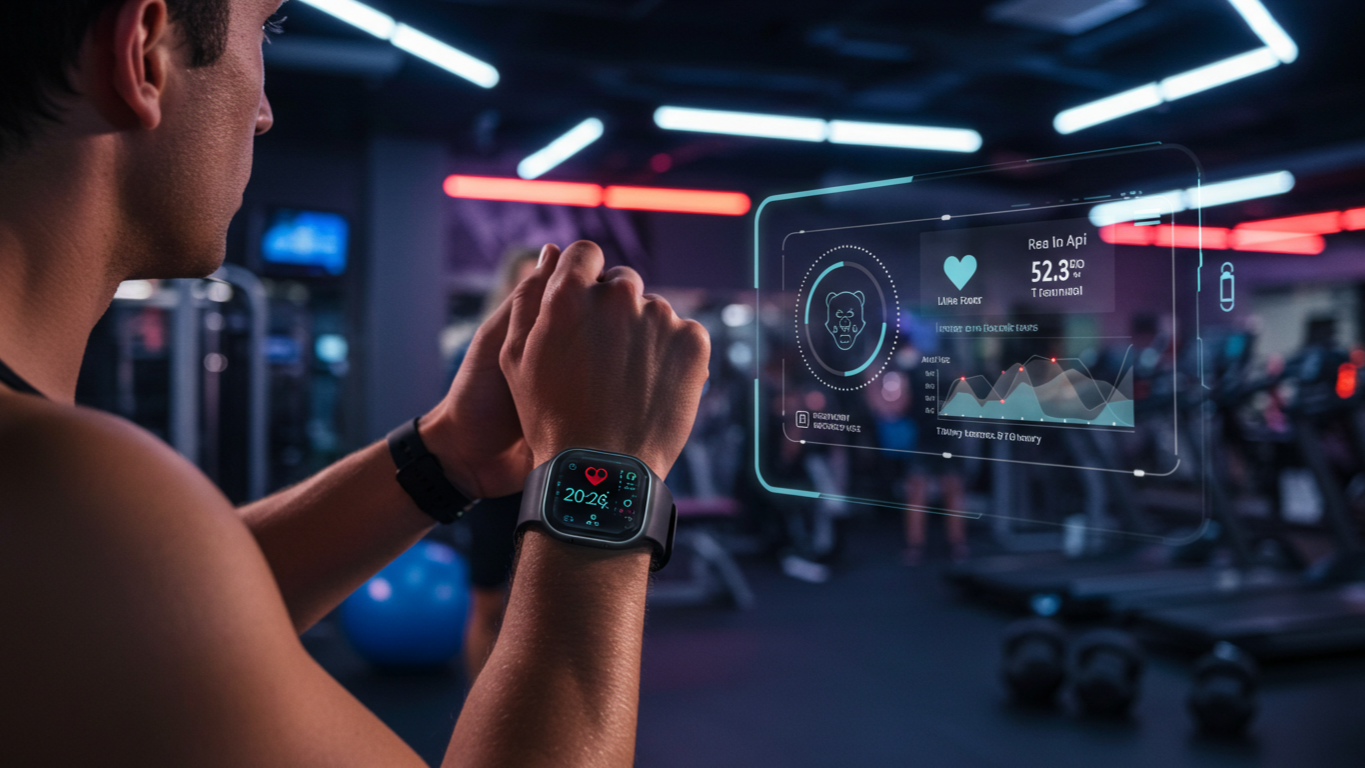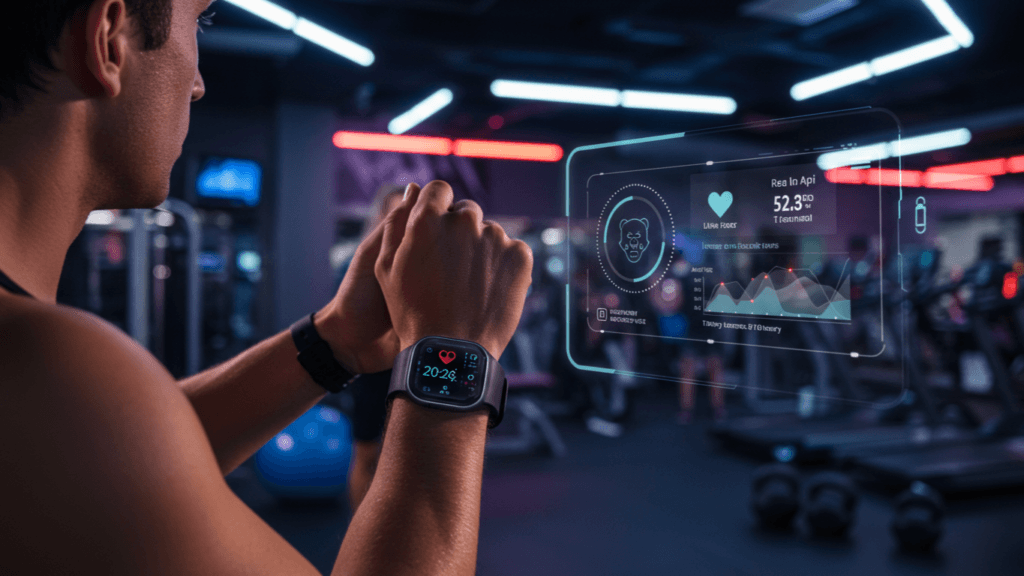
Wearable fitness technology didn’t just appear out of thin air—it has a long and fascinating history rooted in some of the simplest devices. I remember when the only “wearable” fitness tracker we had was a basic pedometer strapped to a shoe. Back then, if you hit a certain number of steps, that was an achievement worth celebrating. But as basic as these gadgets were, they paved the way for the incredible technology we have today.
This evolution has been nothing short of revolutionary, transforming fitness from something we often did blindly into a deeply personalized journey guided by real-time insights. Let’s dive into the history, current landscape, and future of wearable fitness tech—and why it’s much more than a passing trend.
The Humble Beginnings: From Pedometers to Digital Health Companions
The real change began in the mid-2000s when tech companies started integrating digital health metrics into compact, user-friendly devices. Who could forget the first Fitbit? For the first time, we could see more than just our steps—we gained insights into heart rate, calories burned, and even sleep patterns. These insights were more than novel; they fundamentally changed how we viewed health.
When smartphones and Bluetooth connectivity came along, these wearables became even more versatile. Now, not only could we track our health metrics, but we could also sync everything to our phones, diving into detailed stats about our fitness progress and habits. Suddenly, tracking our daily activities felt like having a mini health laboratory right on our wrist.
Beyond the devices themselves, social media played a huge role in amplifying the appeal of wearables. Sharing achievements on platforms like Instagram and Facebook brought a new sense of community and accountability, encouraging others to join the wearable revolution. And when companies began incorporating AI and advanced algorithms, we got digital personal trainers that provided customized fitness plans tailored to each user’s goals. No more cookie-cutter workouts—these devices were now learning and adapting alongside us.
The shift toward healthier lifestyles and wellness tech helped fuel this rapid growth. As more of us became conscious of our health, especially with rising concerns about conditions like obesity, wearables went from being a novelty to an essential part of our daily lives.
Current Landscape of Wearable Fitness Technology
Today, wearable fitness technology is a full-blown industry, with gadgets catering to nearly every fitness style and preference. Whether you’re a runner, cyclist, swimmer, or yoga enthusiast, there’s a wearable that’s likely designed just for you.
Consider the Apple Watch, which has evolved far beyond a simple fitness tracker. It’s practically an extension of our smartphones, enabling users to manage calls, texts, and even monitor heart health—all while tracking fitness metrics. Apple’s emphasis on user health, with features like heart rate alerts and ECG monitors, has solidified its position as a powerful tool for health-conscious individuals.
Then, there’s Fitbit, known for its comprehensive focus on heart rate monitoring, sleep tracking, and even stress management. With a history rooted in fitness tracking, Fitbit has continued to evolve, adding features that help users understand and manage their overall well-being. It’s accessible, user-friendly, and designed with holistic health in mind.
For athletes and serious fitness enthusiasts, Garmin offers a range of robust devices known for precision and durability. Garmin smartwatches cater specifically to outdoor enthusiasts and high-performance athletes who need reliable data to monitor everything from distance and pace to heart rate variability. Its focus on providing reliable metrics for people training in extreme conditions makes it a favorite among runners, cyclists, and outdoor adventurers.
For those focused on serious training and high-accuracy metrics, Polar offers a range of wearables that are especially popular among runners, triathletes, and those with performance-oriented goals. Known for its advanced heart rate monitoring and unique insights into recovery and sleep, Polar devices provide users with a deeper understanding of how their bodies respond to workouts. Polar’s signature features, such as Training Load Pro and Nightly Recharge, go beyond basic stats, analyzing the cumulative strain on the body and providing recovery recommendations. These features make Polar a favorite for athletes who prioritize optimal performance, ensuring they get precise, actionable data to enhance their training regimens and overall fitness journey.
Whoop is designed for those who want to optimize performance through an intense focus on recovery, sleep, and strain. Unlike most wearables, Whoop is worn 24/7 and doesn’t have a screen, allowing it to gather uninterrupted, detailed health data. It’s best known for its ability to track daily recovery and provide insights into how prepared your body is for physical exertion. Whoop’s analytics cover everything from cardiovascular strain to sleep quality, all delivered through a membership model that provides ongoing insights via the app. This unique approach has made Whoop a favorite among athletes, coaches, and anyone committed to getting the most out of their workouts while balancing recovery for peak performance.
There’s also been a shift beyond wristwear; smart rings and armbands are gaining popularity. These options provide a discreet way to monitor vital statistics, ideal for those who prefer minimalism or don’t want a traditional smartwatch. The options available today are as varied as users’ unique needs and goals.
Learn more about each of the brands mentioned in this section in our comprehensive guide to the best smartwatches for fitness in 2025.
The Features That Make Wearables Indispensable
The sheer range of features packed into modern wearables is astounding. From VO2 Max tracking to SpO2 sensors for blood oxygen levels, hydration reminders, and sleep analysis, these devices are designed to support every aspect of health—not just fitness. But it’s not only about tracking physical stats; modern wearables now offer insights and personalized feedback that can help users optimize their routines and reach wellness milestones.
For instance, if you’re interested in heart health, features like ECG monitors can be incredibly valuable. For sleep, tracking your patterns can offer insight into the quality and restorative value of your sleep. And if stress management is a priority, wearables with stress-tracking capabilities can help you become more mindful throughout the day.
With so many features, it’s essential to choose a device that aligns with your goals. Need GPS for outdoor training? Or maybe sleep tracking is your main focus? Assessing what matters most helps ensure you’re getting a wearable that truly supports your personal health journey.
How Wearable Technology Enhances Personal Fitness

Let’s talk about how wearable tech has the potential to be a game-changer for personal fitness. It’s almost like having a fitness coach on your wrist, guiding you every step of the way. Real-time health monitoring gives immediate feedback on your body’s condition during workouts, allowing you to optimize as you go. If your heart rate spikes unexpectedly during a run, your device might nudge you to slow down—helping you avoid unnecessary strain or injury.
One of the most exciting advancements in wearable tech is the integration of AI and machine learning. These tools can analyze patterns in your data, learning from your habits to personalize workout suggestions. It’s like having a smart assistant that’s continually growing with you, tailoring recommendations based on your progress and goals.
For those of us who prefer to exercise outside a traditional gym, wearables offer a range of dynamic at-home workout options, from guided yoga sessions to high-intensity interval training (HIIT) workouts. With just a wearable and a bit of space, you can enjoy a varied exercise routine that adapts to your fitness level and environment.
Beyond workouts, wearables impact overall health by monitoring sleep cycles, stress levels, and various other metrics that provide a well-rounded look at your well-being. Improving these aspects has the potential to enhance both everyday life and long-term health. You can read my article on wearable tech and mental health for a comprehensive analysis of this topic.
Another notable area where wearables excel is preventive health care. Early detection of irregularities—like unusual heart rate patterns—empowers users to seek medical advice before minor issues escalate. This proactive approach means that everyone has the opportunity to be an active participant in their own well-being, promoting lifelong health benefits.
Wearable Tech in Professional Sports: Transforming Performance and Strategy
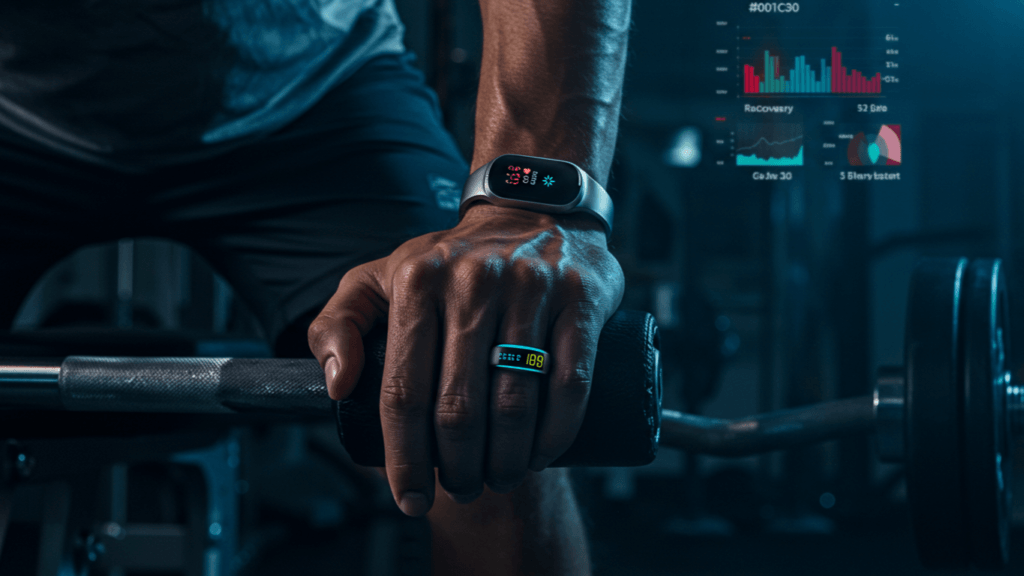
As it stands today, wearable technology isn’t just for everyday fitness enthusiasts—it’s making a significant impact in professional sports. These devices provide athletes and coaches with an incredible wealth of data, allowing them to analyze and optimize performance like never before.
In sports where recovery is essential, wearables can be used to monitor rest patterns and muscle strain, ensuring athletes don’t push themselves too hard. This focus on recovery not only helps prevent injuries but can also extend athletes’ careers. For instance, football and rugby players use wearable tech to track recovery data, aiding in strategic decisions about when they should rest or train at lower intensities.
Wearable tech has even influenced tactical decisions in team sports. Coaches can monitor real-time data to make decisions during games, adjusting strategies based on how players are performing or recovering. This real-time feedback loop is a powerful advantage in high-stakes scenarios.
As wearable tech becomes more sophisticated, its role in professional sports will continue to grow, offering coaches and athletes new ways to refine performance and gain a competitive edge.
Learn more about how wearables are empowering competitive athletes to reach peak performance in our comprehensive guide to the best fitness trackers for HIIT (High Intensity Interval Training).
The Future of Wearable Fitness Technology: What’s Next?
Wearable tech isn’t just about counting steps or monitoring heart rates anymore. The future of this technology promises even more seamless integration into our daily lives, with wearables becoming almost invisible while offering invaluable health insights.
One exciting trend on the horizon is miniaturization. Devices may shift from the wrist to clothing or even smart tattoos, offering more comfort and less interference with daily activities. Imagine a fitness tracker embedded in your workout gear, capturing all your metrics without the need for an external device.
AI-driven personalization will also become more sophisticated. In the future, your wearable might not only suggest workouts but also recommend modified exercises based on your stress levels, sleep quality, or even recent diet. This level of customization turns wearables into a personalized health assistant, guiding you through every aspect of your wellness journey.
With broader integration into health networks, wearables could soon become standard tools for virtual healthcare. This could allow for instant access to your health data by medical professionals, facilitating real-time recommendations and creating a seamless link between wearable tech and professional medical guidance.
The ultimate goal is clear: to empower individuals to take control of their health in more informed, personalized ways. Wearable tech, with its rapid innovations, is set to redefine how we think about health and wellness, making proactive health management accessible to everyone.
We have conducted research and we invite to check our detailed article on the Top 5 Trends Revolutionizing Wearable Fitness Technology in 2025.
Innovators Leading the Future of Wearable Fitness Tech
As wearable fitness technology evolves, certain companies are setting the pace with groundbreaking ideas, pushing the limits of what these devices can achieve. From advanced biometrics to integrations with broader health ecosystems, these innovators are crafting wearables that promise to reshape our understanding of health and fitness. Here’s a look at the companies at the forefront and the next-generation concepts they’re working to release in the coming years.
Apple: Apple has consistently led in health-focused innovation with the Apple Watch, which continues to evolve in functionality and design. Looking to the future, Apple is reportedly exploring non-invasive blood glucose monitoring—a potential game-changer for individuals with diabetes and anyone interested in maintaining stable blood sugar levels. Additionally, Apple is working on mental health features that use advanced algorithms to detect stress and suggest real-time mindfulness or breathing exercises, positioning the Apple Watch as a holistic tool for overall wellness.
Google (Fitbit): Since its acquisition by Google, Fitbit has expanded its focus from general fitness to a more comprehensive health-tracking experience. Google is leveraging its AI capabilities to integrate Fitbit’s tracking expertise with virtual healthcare platforms, potentially allowing users to share health data with medical professionals seamlessly. Future wearables could also incorporate passive bio-sensing, enabling continuous metrics like hydration and respiratory rates. This holistic integration could make Fitbit devices a vital part of preventive healthcare and everyday wellness.
Garmin: Known for its high-precision devices tailored to endurance athletes, Garmin is working on even more specialized metrics for multi-sport training. This includes advanced biometrics to assess physical strain and make sport-specific recommendations that enhance performance without compromising recovery. Garmin is also expanding its solar-charging technology to ensure longer battery life in rugged conditions, making it ideal for outdoor athletes who need sustained power in remote areas. These innovations keep Garmin at the cutting edge for athletes and adventurers alike.
Oura: Oura’s sleep and recovery tracking has made it a leader in the wearable ring market, and it’s now exploring enhanced biometrics like blood pressure and stress response. Future Oura rings may provide deeper insights into balancing daily productivity, exercise, and recovery. Oura is also delving into data-driven coaching to help users maintain their ideal activity-rest balance, which could revolutionize how users approach wellness by offering a more rounded perspective on health.
Whoop: As a pioneer in recovery and strain management, Whoop is focused on optimizing performance for athletes and fitness enthusiasts. Future innovations from Whoop include seamless integrations with sport-specific training programs and advanced AI analytics for recovery strategies. Whoop is also experimenting with non-wearable sensors embedded into clothing or sports equipment, allowing users to track real-time data during physical activity. These developments make Whoop an increasingly versatile choice for a wide range of training environments.
By driving innovation in fitness and wellness, these companies are laying the groundwork for the next phase in wearable technology. With advances like real-time bio-sensing, solar charging, and mental health tracking, the future of wearables promises not only improved fitness tracking but a holistic approach to health and lifestyle management. Each of these brands is contributing unique features and insights, providing users with more meaningful, personalized guidance on their journey to better health.
For a deeper dive into the lesser know brands that are reshaping the wearables market, please take a look at our article on Innovative Wearable Fitness Technology Brands To Watch In 2025.
Security Considerations in Wearable Fitness Tech
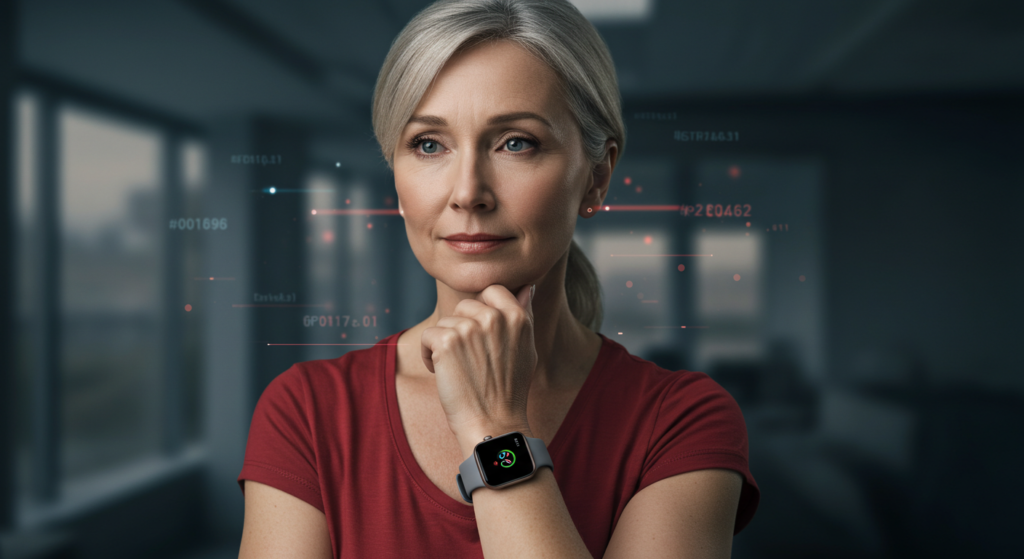
As wearable fitness technology grows more sophisticated, so do the concerns around data security and privacy. These devices collect vast amounts of personal health information, from heart rate and sleep patterns to location data and activity levels. While wearables are revolutionizing how we track and manage our health, they also raise critical questions about how securely this sensitive data is handled. Here’s a look at the primary security considerations users should be aware of.
Data Privacy and Ownership
One of the most pressing concerns for wearable users is data privacy—particularly, who owns the data collected and how it’s used. Health metrics and other personal data provide companies with valuable insights, but users want assurance that their data isn’t being shared with third parties without their consent. Many wearable companies have begun to provide transparency in their privacy policies, allowing users to see how their data is used and giving them control over what information they share. However, understanding these policies can be complex, making data privacy a major consideration in choosing a wearable device.
Risk of Data Breaches
Wearables collect a wealth of information, making them potential targets for cyberattacks. Data breaches involving health metrics could expose users to significant risks, including identity theft and fraud. Companies handling wearable data must prioritize robust cybersecurity practices, such as end-to-end encryption and regular security audits, to prevent unauthorized access. With the rise of Internet of Things (IoT) devices and interconnected platforms, users should consider brands with a strong reputation for cybersecurity when selecting wearable technology.
Transparency in Data Usage
Users are increasingly concerned with knowing precisely what data is being collected, how it’s used, and who can access it. Many wearable devices share data with connected health apps and platforms, potentially broadening access to third-party companies. To address this, wearable companies are beginning to offer more explicit settings that allow users to decide what data to share, how long it’s stored, and how it’s processed. Transparency not only fosters trust but also empowers users to control their health information actively.
Cybersecurity in Health Data Storage and Transfer
Most wearables synchronize data through cloud storage or Bluetooth, which means personal health information is continuously being transferred. Without strong cybersecurity measures, this data transfer is vulnerable to interception, especially if security protocols are weak. Companies like Apple and Fitbit, for instance, implement rigorous encryption protocols to secure user data both in transit and at rest, minimizing the risk of unauthorized access. However, users should take additional measures, such as using strong passwords and keeping their devices updated, to ensure optimal security.
Anonymization and Data De-identification
A growing area of focus is how companies anonymize or de-identify user data. Some wearable tech companies are adopting anonymization techniques to protect individual user identities when aggregating data for research or product improvement purposes. This means personal data isn’t directly tied back to an individual user, providing an added layer of privacy. Understanding whether a company employs these practices can help users feel more confident that their information is protected, even when used for larger studies or health trends.
Ethical Considerations and Challenges
While wearable fitness tech offers incredible benefits, it brings ethical considerations that users and companies alike must address. Privacy remains a core issue. These devices collect extensive personal data, from heart rate patterns to location tracking, raising concerns about data ownership and security. Users need assurance that companies are implementing robust protections and using their data responsibly.
The ethical handling of biometric data is another concern. Transparency is key—users should know how their data is collected, stored, and shared, particularly if third-party partnerships are involved. Clear, accessible policies help build trust and allow users to make informed choices about their data.
There are also potential psychological impacts. Constant health monitoring can cause stress or anxiety in some users, as they become overly fixated on tracking health metrics. It’s essential to remember that while wearables provide valuable insights, they are not a substitute for medical advice. For critical health concerns, consulting healthcare professionals remains crucial, with wearables serving as a helpful, but not definitive, tool in personal health management.
Building a More Secure and Responsible Wearable Tech Future
As wearable technology companies advance in addressing security and ethical challenges, creating a secure and responsible wearable tech future requires a shared commitment. Users can enhance data protection by choosing reputable brands with proven cybersecurity and data protection practices, regularly updating device software, and carefully managing privacy settings. These proactive steps help ensure personal data remains secure.
On the industry side, companies are tasked with not only robust security but also responsible data handling. Transparency around data usage, sharing practices, and partnerships is key to building trust, empowering users to make informed choices. Balancing innovative health tracking with privacy safeguards will be essential as the wearable tech industry grows. This commitment to security and ethical practices enables wearable tech to fulfill its potential—enhancing health and well-being without compromising user trust.
Wrapping Up: A Balanced Future for Wearable Fitness Technology
Wearable fitness technology has evolved far beyond simple step counters, becoming a powerful tool that helps people make informed health and wellness decisions. With real-time data, AI-driven personalization, and in-depth health insights, these devices offer users a blend of motivation and actionable knowledge that’s hard to match.
Yet, as exciting as these advancements are, they come with responsibilities—for both users and companies. Ethical and security considerations, such as protecting user data and ensuring transparency in data handling, are essential to building trust. Wearable tech is about more than just fitness; it’s about integrating technology into our daily lives responsibly and effectively.
Looking ahead, wearable fitness tech promises to shape the future of wellness, offering increasingly personalized health recommendations and possibly integrating even closer with healthcare systems. Whether you’re an athlete, a fitness enthusiast, or simply aiming to make healthier choices, wearable tech can be a valuable partner on your journey. As we embrace these possibilities, keeping a balance between innovation, security, and ethical responsibility will be key to ensuring wearable technology continues to benefit and empower users everywhere.
We would love to hear what you think about wearables and how they impact our daily lives. Feel free to leave your comments or questions below, we review and respond to every question.
